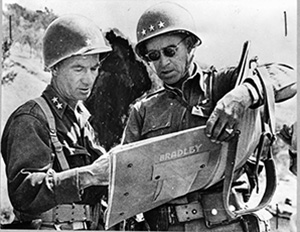Mark Wobbe, Principal at Gibson, shares his insight on what 2019 may bring for the property & casualty market.  How did the property & casualty (P&C) market perform in 2018 and where is it headed in 2019?
How did the property & casualty (P&C) market perform in 2018 and where is it headed in 2019?
According to the Insurance Service Office’s (ISO) industry 6-month 2018 results:
- Overall premium growth was 13.3%, up from 4.1% for the same period in 2017.
- Commercial insurers’ combined ratio, a measure of underwriting profitability, improved to 95.4%.
- Net investment income increased 14.6% to $26.8 billion in the first six months of 2018 from $23.4 billion in the same period 2017.
- The industry’s surplus, a key factor of financial strength, reached a record high at $761 billion.
What does all of this mean for commercial P&C insurance programs in 2019?
Here’s a look at what’s likely to happen by line of coverage. Please note that every commercial insurance program has its own claims experience and other unique circumstances that will influence its rates and premiums; the following, therefore, is general commentary on what could transpire across the broader marketplace and should not be taken as specific guidance.
What is known about the 2018 marketplace is that if followed two difficult quarters, 3Q17 and 4Q17, where the P&C industry saw record losses from catastrophe (CAT) activity, which included Hurricanes Harvey, Irma, and Maria; California wildfires, and the Mexico City earthquake. Some analysts declared the P&C industry results were deteriorating prior to these CAT losses and now hindsight reveals rates in several lines bottomed-out in 2018 (or as early as late 2017) and began a small climb upward. For 2019, most lines of commercial insurance have a potential for increased rates leading to a higher insurance spend for most multi-line commercial insurance programs.
Click a topic from bullet pointed list to skip to that specific section.
- Workers’ Compensation
- Property
- Automobile
- General Liability and Umbrella & Excess Liability
- Directors’ & Officers’ Liability, Employment Practices Liability, and Fiduciary Liability
- Cyber Risk
- Construction
- Summary
- Other Factors
Workers’ Compensation
Throughout 2018, the workers’ compensation marketplace was competitive as insurers continued their run of profitable underwriting results. Multi-line and mono-line insurers alike competed aggressively for market share.
Competing forces are at play. Factors such as the aging workforce, opioid epidemic, continued medical cost inflation, the legalization of marijuana, and blurring lines between employment status and independent contractor status (placing more losses in the workers’ compensation system) are headwinds and create challenges, while improvements in return-to-work, pharmaceutical management, and medical case management techniques (including big data and predictive analytics) have reduced claim severity.
Underwriters remain nonetheless optimistic about workers’ compensation heading into 2019. With claims frequency generally improving, and insurer surplus at record levels, competition for employers with favorable loss experience and effective controls in-place will continue.
Unfavorable state jurisdictions and employers with loss experience will be scrutinized and lead to state-specific / industry-specific appetites from insurers, and in these cases underwriters will continue to pursue modest rate increases when loss experience warrants. In other favorable state venues and for employers with excellent loss experience (and demonstrated controls), there could be a range of pricing from rate reductions of minus 5% to minus 7% to modest increases in the +1 to +2% range.
Property
Although buyers in CAT-prone areas and those with CAT-related losses saw rate increases in 2018, the overall impact of 2017’s record-setting CAT losses (over $140 billion), was favorable. Pockets emerged within the 2018 market: CAT-prone properties, CAT-prone with heavy loss experience, and non-CAT properties, with the latter seeing the least impact. Underwriters’ responses varied across these pockets throughout 2018, and this approach is expected to continue throughout 2019. The stabilizing factor was the resilience of the worldwide reinsurance market, which was fueled by alternative capital (e.g., insurance linked securities or CAT bonds).
On the other hand, Lloyd’s syndicates appear to have taken a disproportionate share of the 2017 CAT losses, and their efforts throughout 2018 to re-underwrite will undoubtedly continue in 2019 with both rate increases and coverage reductions, especially in CAT-prone areas. Lloyd’s will also highly scrutinize other categories of business such as dealers’ open lot, frame habitational/multi-family housing, and layered programs. Expect continued push for rate from London.
Underwriter will look to carefully deploy their property capacity. Unprotected commercial structures with high fire loads, such as wood & lumber-related businesses, or large concentrations of values in rural locations lacking water and adequate fire department services may face challenges. Also, underwriters will closely review business income calculations, insurance-to-value calculations to push for higher replacement cost on buildings and machinery & equipment, and may refuse to offer blanket coverage or utilize margin clauses, coinsurance, or enforce other changes in terms such as percentage wind & hail deductibles and reduced flood & water-related coverage.
Conservative estimates of rate for non-CAT property are flat to +3% range. CAT-prone areas could see +3% to +10%, and CAT-prone programs with heavy losses could see increases in excess of +10%.
AUTOMOBILE
Automobile continues to be a distressed line. The industry’s results continue to deteriorate despite 29 consecutive quarters of rate increases. Large jury awards in single-plaintiff cases, the distracted driving phenomena, record number of road miles by US drivers, continued inflation in the cost to settle auto fatalities, and inflation of repair costs for vehicle physical damage are all factors.
It is expected the rate increases will persist in 2018. Large fleets, heavy trucks, livery exposures, and unfavorable loss experience will continue to be conservatively underwritten and priced accordingly. Smaller fleets with good loss experience and risk control measures in-place will see better terms and “lower” rate increases.
Beyond the now common rear view cameras, GPS, and park assist systems, the future will bring new technologies like autonomous or self-driving vehicles. Most carriers will continue to increase Automobile rates in 2019. Overall, rate changes could be in the +5% to +12.5% range.
General Liability and Umbrella & Excess Liability
Conditions impacting these casualty lines remain similar to 2018. Insurer capacity also remains abundant. Litigation trends vary by jurisdiction with some experiencing a higher propensity for cases going to jury trial, highly organized and aggressive plaintiff’s bars, and increased awards due to punitive damages.
Underwriters continue to evolve their liability appetites with some expanding and pursuing higher-risk product liability exposures in an effort to gain market share. This will likely continue. General liability rates in the flat to +5% range are likely with rate decreases possible in some instances.
Umbrella and excess remains relatively soft due to ample capacity, although the aggressiveness of underwriters appears to be dissipating slightly. Competition is strongest in the excess layer position (i.e., layers above the lead Umbrella). Clients with clean loss histories and in industries underwriters view as favorable should see umbrella pricing in the range of -2% to +5% range. However, those with large fleets, significant over-the-road exposures, unfavorable loss experience, and/or those in certain high-hazard industries could see more restrictive terms from underwriters and higher premiums.
Directors’ & Officers’, Employment Practices Liability, And Fiduciary Liability
As was the case in 2018, the private company marketplace for management liability coverages – D&O, employment practices (EPL), and fiduciary liability – is expected to remain competitive with many insurers vying for market share. Opportunities remain to find high value placements trading-off between coverage terms and price.
Private companies and not-for-profits could see a pricing environment of flat to +10% in 2019. Emphasis will likely be placed on industry and financial condition. Certain situations could see moderate rate decreases. The marketplace is highly nuanced with pricing and terms varying widely depending on industry (e.g., large health care, financial institutions, emerging industries, etc.), merger & acquisition activity, and life-cycle stage (e.g., a venture-backed, early-stage company versus an older, consistently profitable, tightly-held business). Underwriters continue to monitor developments with cyber-attacks, antitrust/unfair business practices, defense cost inflation, M&A-related claims, Supreme Court decisions, and intensified regulatory activity.
Challenges are abundant in the EPL arena. Pay equity, societal shifts, an evolving corporate culture placing a heightened emphasis on inclusion, diversity, and accountability for employment-related matters. In addition, the #MeToo movement continues, and certain States continue activism in areas where the federal government and current administration is pulling back.
Insurers continue to monitor social media, joint employer liability, EEOC developments, DOL rulings, the Fair Labor Standards Act, employee classifications/independent contractors, and wage & hour claims. Certain jurisdictions like California, New York, and Massachusetts, and certain industries like restaurants, hospitality, financial institutions, staffing firms, and health care continue to be monitored closely.
In 2019, expect underwriters to seek to increase retentions and price EPL from flat to +5% depending on loss histories, employee turnover, and relative exposure to issues mentioned above.
Cyber Risk
Cyber is the new frontier of the P&C market and the majority of new product development is focused in this area. Insuring these exposures is a significant growth opportunity for insurance carriers, as take-up rates increase (businesses of all sizes are now buying the coverage). However, there are still many first-time buyers, and underwriters continue to target these first-timers utilizing their ample capacity to gain market share. Businesses with demonstrated levels of security and internal controls are sought by underwriters and offered competitive pricing and terms. In 2019, rates could vary widely from minus 5% to +5%.
Underwriter focus on testing for an organization’s resilience – its preparedness, the ability to respond to an incident, recovery efforts, and business continuity planning, as well as its I.T. controls such as encryption. How well employees are trained on data and network security and regulatory compliance, if applicable (e.g., HIPAA), is also reviewed. The most competitive premiums will be offered to the most prepared organizations.
New products with expanded features, including both additional coverages and loss control/mitigation services, are continually entering the marketplace. Coverage examples include ransomware, social engineering fraud, cyber-terrorism including nation-state attacks, and business interruption & dependent business interruption. “Turn-key” services have become prevalent whereby cyber insurance not only provides coverage for loss but also includes access to a team of pre-arranged, value-added service providers. These services include forensic I.T. and network security consultants, crisis management specialists, public relations firms, and legal counsel with cyber-event and privacy law expertise. Some insurers also include pre-incident, planning services as a form of loss control.
Construction
As construction activity diversifies, the industry’s risk profile evolves. Underwriters grapple with new technologies & processes, diversified operations, and a blurring line between contractor’s general liability and professional liability exposures. Shortages of skilled workers continues in certain territories, and there continues to be pockets of disruption in general liability and workers’ compensation lines from construction defect exposures, difficult legal environments in certain states, and challenging workers’ compensation environments in certain states with high amounts of construction activity (e.g., Florida). Overall, however, there is competition among underwriters for construction insurance programs.
In 2018, builders’ risk programs did not see the disruption some predicted given record 2017 CAT losses. Although wood-frame projects continue to be a challenge, as many underwriters avoid these projects altogether. Wood-frame projects will continue to be highly scrutinized by underwriters in 2019 and will see the most conservative terms and pricing. Newer entrants into the market and ample capacity from long-time underwriters will lead to favorable terms and pricing in 2019. Flat pricing could continue for favorable risks. Wood-frame and projects located in CAT-prone areas will be challenged from both a terms and pricing standpoint.
For the casualty lines within a construction program – general liability, automobile, workers’ compensation, and umbrella/excess – the market will remain relatively competitive in 2019 with the exception of automobile. As mentioned above, the automobile line is distressed and this is particularly apparent in the construction space. Auto rates could be in the +5% to +20% range.
Workers’ compensation, on the other hand, is likely to continue as the most competitive line with small, single-digit rate decreases to slight increases (-3% to +3%). General liability could see flat pricing with small rate increases in some cases (flat to +3%). Nuances in certain jurisdictions continue, namely Illinois, Florida, California, and New York State. Umbrella & excess will likely remain competitive with moderate upward price pressures in some cases (-3% to +3%). However, programs with larger fleets and wider radius of operations could see increased premiums in the umbrella & excess layers. In particular, umbrella pricing has tightened significantly for construction firms building in the residential market, including assisted living facilities. This will also pose challenges for firms with large fleets.
Summary
Recent years have provided relatively calm conditions in the commercial P&C market. With limited exceptions (e.g., automobile), rates changes have been stable leading to favorable renewal pricing. Market surveys in recent quarters indicate a bottoming-out of rate decreases and an upward trend, which varies in intensity by line of insurance. The CAT losses of second-half 2017 and 2018 did not move the market as far as some predicted this time last year. Several competitive forces (e.g., record high industry surplus) create ample capacity, competition among insurance companies, and moderate pricing changes.
Other Factors
Emerging Risks
The P&C industry will continue to evolve in its response to the ever-growing threat of various cyber risks. Cybersecurity threats including ransomware and corporate disruption attacks will continue to evolve increasing in volume and sophistication with the further intermingling of the physical and cyber worlds. A complete review of cybersecurity risks is beyond the scope of this post, but experts warn of nation-state actors, cloud services security issues, extortion of the internet of things (IoT), attacks on industrial control systems, and intensity of software subversion and identity subversion activities. Another threat is the collection of consumer (private individual) data and social media content to be held and used later for extortion purposes. Cybersecurity experts and law enforcement are concerned these activities could target children and adolescents.
Today’s P&C insurance products only address a portion of the known cybersecurity risks. As new risks emerge, current coverages will evolve and altogether new products will launch. Given available capital and the market opportunity, the P&C industry will continue to explore new ways to provide insurance solutions for certain emerging risks such as has already been seen with drones, social engineering fraud, terrorism, and workplace violence. However, other emerging risks such as geo-political risks, the sharing economy, emerging technologies such as the IoT, and talent & skill shortages likely will not be addressed (or at least not completely) by insurance. Organizations will need to look to other risk management techniques to prevent, transfer or mitigate exposures in these areas.
*Please note that every commercial insurance program has its own claims experience and other unique circumstances that will influence its rates and premiums; the above overview, therefore, is general commentary on what could transpire across the marketplace and is not specific guidance.



